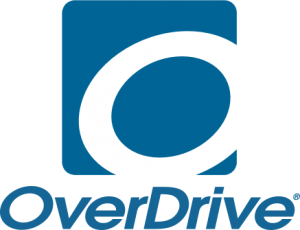Now that I’m at the end of the reading part of my tech research, it’s time to share what I’ve learned and found before I launch into my next phase – trying it out! When I started, I was interested in three areas: twitter, augmented reality, and developing better fact checking techniques. While I found a number of articles and videos for the Twitter (mostly at the beginner level) and evaluating information especially (many on the Stanford study, though I haven’t included them because I’m more interested in the strategies than the research), there were not too many on AR, and they were not terribly helpful. These are the 7 that I found most relevant and helpful.
While I was very excited about the posibilities of augmented reality, the two apps I found that best fit what I want to do, HP Reveal & Layar, have proven to be frustratingly unavailable. What I’d really like to do is to be able to take an object (like a shovel, a uniform, etc.) which the students can touch and use the AR platform to link it to text, pictures, videos, websites etc. Of the two platforms, Layar had the better fit since you could probably get it to do this. It seems like HP Reveal could only be used with print. Unfortunately, Layar is no long in existence, and the other popular platforms (like Metaverse) did not seem to meaningfully require students to interact with actual physical objects. For now, I have put this line of inquiry aside. Perhaps someone will be able to point me in a better direction later.
With Twitter, one of the goals I have is to find a better way to embed my timeline into our SLLC website, and more specifically to send only specifically curated links to different pages so that any great science links I can send to the science page, socials to the socials page, and so on. I suspected that I could do this with hashtags, but I’ve since learned about Twitter lists! Hopefully this will help. Wired magazine has a good article on how to get started with lists and some helpful suggestions about whether or not to make them private or public: “Want a Saner Twitter Experience? Start Using Lists.” While lists seem like a helpful start, I think that they still aren’t the final solution, and I may have to use hashtags as well. Really, I think I’ll have to do some trial and error.
I’m still pretty new to Twitter and I have really only been using it to replace my print newspapers, so I’ve found some great beginner how to guides from Teach Thought: “The Honest-To-Goodness Beginner’s Guide To Twitter For Teachers,” and “Twitter For Learning: 7 Ideas For Using Hashtags In The Classroom” Both were easy to follow, and not so simplistic that I felt they wasted my time. Along with the how to’s on each page, there were great tips, and some very important etiquette. I’m a late comer to a community that has highly evolved. Don’t want to just blunder my way in and make a mess. Another beginner guide that I really like is from Scholastic: “Twitter for Teachers: A Beginner’s Guide to Getting Started.” It has much of the same information as the one in Teach Thought, but it also has a great list of terminology that teachers and students could use. There’s not too much else to it though.
The last part that I want to focus on is on developing stronger methods for evaluating information, specifically online. I’ve found a great online text book, a great series of lessons from Media Smarts called “Authenticating Information,” and a list of “7 steps to better fact checking“. What I really like about these seven steps from PolitiFact is that they are concise, consistent with the book and Media Smarts resources, but more interestingly, that they were published in 2014 before so much of the rhetoric around fake news was in our feeds daily. These steps seem to be standing up to time.
The series of Media Smart lessons are very helpful because they have videos, student handouts, lesson plans, and just generally a lot of great suggestions and information. I’ve tried them out with my grade 11’s and they worked well. What I also like about the lessons in “Authenticating Information” is that they have embraced the lessons that came out of the Stanford University study which revealed that most people, adults and teens, are either very inefficient at authenticating information, or they are frankly bad at it.
One of the interesting items to come out of the Stanford Study is how use of tools like the CRAAP test have proven to be ineffective, and actually cause users to falsely believe they have solid information. Mike Caufield worked with some of the researchers of the Stanford Study to create the free textbook, Web Literacy for Student Fact-Checkers. It is an easy to read online book that not only provides valuable background information, but also some very practical strategies. I am really looking forward to working more with this text!
Now the fun part begins! Time to experiment with what I’ve learned!
Works Cited
“Authenticating Information.” MediaSmarts, 5 Feb. 2019, http://mediasmarts.ca/digital-media-literacy/digital-issues/authenticating-information.
Caulfield, Mike. Web Literacy for Student Fact-Checkers, Self-Published, 8 Jan. 2017, https://webliteracy.pressbooks.com/front-matter/web-strategies-for-student-fact-checkers/.
Drobnic Holan, Angie. “7 Steps to Better Fact-Checking.” PolitiFact, Poynter Institute, 20 Aug. 2014, https://www.politifact.com/truth-o-meter/article/2014/aug/20/7-steps-better-fact-checking/.
Everette, Meghan. “Twitter for Teachers: A Beginner’s Guide to Getting Started.” Scholastic, 10 Oct. 2018, https://www.scholastic.com/teachers/blog-posts/meghan-everette/twitter-teachers-beginners-guide-getting-started/.
Heick, Terry, and Lesley University Online. “The Honest-To-Goodness Beginner’s Guide To Twitter For Teachers.” TeachThought, 28 Aug. 2017, https://www.teachthought.com/technology/the-honest-to-goodness-beginners-guide-for-twitter-for-teachers/.
McMahon, Jordan. “Want a Saner Twitter Experience? Start Using Lists.” Wired, Conde Nast, 13 Mar. 2018, https://www.wired.com/story/how-to-set-up-twitter-lists/.
Pacheco, Anibal. “Twitter For Learning: 7 Ideas For Using Hashtags In The Classroom.” TeachThought, 28 Aug. 2017, https://www.teachthought.com/technology/twitter-for-learning-7-ideas-for-using-hashtags-in-the-classroom/.


















